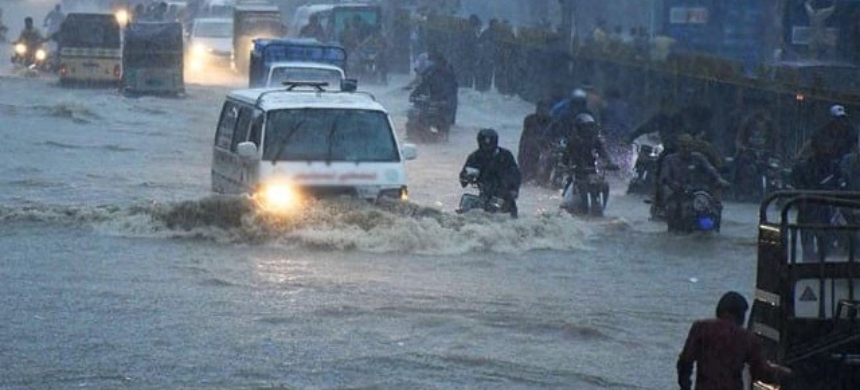The National Emergencies Operation Center (NEOC) of NDMA has issued a series of impact-based weather alerts, forecasting widespread rain, wind, and thunderstorms—along with isolated heavy showers—across several regions of Pakistan from June 29 to July 5, 2025.
Heavy rainfall is expected in Kashmir, northeast Punjab, the Potohar region, Islamabad, and upper to central Khyber Pakhtunkhwa between June 29 and July 3. These areas may experience urban flooding, especially in low-lying zones.
Read more: NDMA Issues Warning Arabian Sea Storm Threatens Pakistan Soon!
Cities including Peshawar, Charsadda, Nowshera, and Kohat in central KP are at heightened risk of flooding. In the Potohar region—covering Rawalpindi, Attock, Chakwal, and Islamabad—urban flooding is likely, particularly during nighttime hours between 9:00 PM and 4:00 AM on June 29.
Eastern Punjab cities such as Lahore, Gujranwala, Sialkot, Gujrat, Narowal, Mandi Bahauddin, and Jhelum may also face flood emergencies. Rainfall in Faisalabad and Sargodha Divisions may lead to local flooding and related hazards.
NEOC also warned of possible flash floods in Hazara and Malakand Divisions in KP, lower Jhelum and Poonch Valleys in AJK, and the Pir Panjal range of northeastern Punjab.
Low-level flooding is forecast in the River Kabul at Nowshera and nearby streams, as well as medium-level flows in the Swat River. Similar water levels are anticipated downstream of Tarbela Dam and in the Chenab River at Khanki and Qadirabad. Flash floods are also possible in River Chitral and its tributaries, including Kunjrab, Ghujerab, Kilik, Chapursan, and Shimshal Braldu Rivers.
These conditions may lead to transport disruptions, landslides, and service interruptions in electricity and communication, especially in hilly and mountainous regions.
From June 29 to July 5, southern Sindh, including Karachi, Hyderabad, Thatta, and Badin, is expected to see heavy to very heavy rainfall. Urban flooding in Karachi and nearby low-lying districts could intensify after July 2.
NDMA has urged local authorities to stay on high alert, implement contingency plans, and issue timely alerts in regional languages to ensure public safety.











